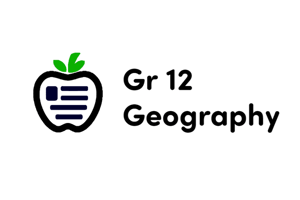Podcast
Questions and Answers
What does a house icon typically signify on a topographic map?
What does a house icon typically signify on a topographic map?
- Residential areas (correct)
- Hospitals or clinics
- Religious institutions
- Educational facilities
How are elevation levels often represented on topographic maps?
How are elevation levels often represented on topographic maps?
- By contour lines (correct)
- By crosses
- By thin lines
- By circular shapes
What do blue patches typically represent on a topographic map?
What do blue patches typically represent on a topographic map?
- Water sources (correct)
- Residential areas
- Educational facilities
- Constructed features
Which type of map is valuable for planning, navigation, and resource management due to its detailed relief and elevation contours?
Which type of map is valuable for planning, navigation, and resource management due to its detailed relief and elevation contours?
How are international borders or property lines typically highlighted on geographical maps?
How are international borders or property lines typically highlighted on geographical maps?
What is a common disadvantage of orthophotos compared to topographic maps?
What is a common disadvantage of orthophotos compared to topographic maps?
What does green typically represent on a topographic map?
What does green typically represent on a topographic map?
How are bodies of water like lakes represented on a topographic map?
How are bodies of water like lakes represented on a topographic map?
Which color hints at steep inclinations on a topographic map?
Which color hints at steep inclinations on a topographic map?
How are urban centers represented on a map in terms of symbols?
How are urban centers represented on a map in terms of symbols?
What do map symbols primarily communicate information about?
What do map symbols primarily communicate information about?
In the realm of geography, what do mapping tools serve as?
In the realm of geography, what do mapping tools serve as?
Flashcards are hidden until you start studying
Study Notes
Overview of Geography Mapping Tools
In the realm of geography, mapping tools play a crucial role in visualizing and understanding the physical landscape, human settlements, and interactions between them. Whether it's a topographic map, orthophoto map, or a traditional paper map, these tools serve as windows to the world around us.
Topographic Map Colors and Landform Types
Topographic maps employ a color scheme to represent elevation changes. Green typically denotes lowland areas while brown represents higher ground. Blue indicates bodies of water like lakes, rivers, and oceans. Brownish red hints at steep inclinations, while white suggests snow-capped mountains or glaciers. Orange signifies arid regions like deserts, and yellow possibly signposts sand dunes or coastal plains. Grey tones symbolize forests, rocks, or meadows.
Economic Activities and Land Usage
Understanding the distribution of economic activities and land usage is essential in geography. Urban centers, agricultural zones, industrial hubs, and recreation regions are represented differently on a map. Urban areas are marked by dense lines representing buildings and roads, while agriculture dominates expansive swathes of land with scattered patterns. Industrial sites appear as clusters of buildings, factories, and transportation networks.
Map Symbols
Map symbols communicate information about human constructions, natural features, and locations. A house icon signifies residential areas, whereas a church symbolizes religious institutions. Buildings with crosses denote hospitals or clinics, and schools showcase educational facilities. Roads are displayed as thin lines connecting cities and towns, while railroads are depicted as thicker lines. Rivers are shown as wavy lines, and reservoirs feature circular shapes filled with blue.
Water Sources and Height Indication
Water sources such as lakes, rivers, streams, and springs are portrayed as blue patches on topographic maps. Elevation levels are denoted by contour lines, which are close together for steep terrain and further apart for gently sloping land. The highest point of a landscape is usually labeled with a '1', indicating an altitude of 100 meters above sea level.
Boundaries and Natural and Constructed Features
Boundaries, whether international borders or property lines, are highlighted on geographical maps. Natural features such as mountain ranges, valleys, cliffs, and forests are accurately depicted, adding depth to the landscape image.
Constructed features like airports, harbors, dams, power plants, sewage treatment plants, military bases, parks, and memorials are also represented on modern maps, providing insight into the human influence on the environment.
Advantages and Disadvantages of Orthophotos and Topographic Maps
Orthophotos capture true-color imagery of the Earth's surface, providing detailed views of landscapes, cities, and environments. They are beneficial for visualizing remote or inaccessible areas, as well as for monitoring environmental changes over time. However, they may not capture elevation changes or provide precise measurements like topographic maps.
Topographic maps, on the other hand, present a three-dimensional view of the Earth's surface, including relief and elevation contours. They are valuable for planning, navigation, and resource management. However, their accuracy is limited by the quality of the data used and the scale of the map.
Scales and Measurement Distance
Scales and measuring distance on maps are crucial for understanding distances and areas accurately. Scales are typically indicated on the map in the form of a bar or a number, representing the ratio between a unit distance on the map and the corresponding distance on the ground. Measuring distances on a map involves using a ruler, a compass, or specialized software to calculate distances between points or along a route.
In conclusion, geographical mapping tools provide a comprehensive understanding of the Earth's surface, human influence, and natural processes. They serve as essential tools for researchers, planners, and policy makers to make informed decisions about land use, resource management, and environmental conservation.
Studying That Suits You
Use AI to generate personalized quizzes and flashcards to suit your learning preferences.


